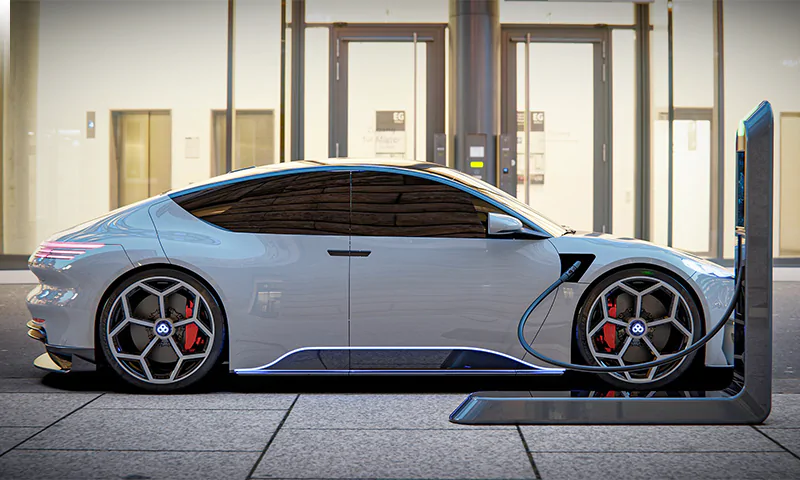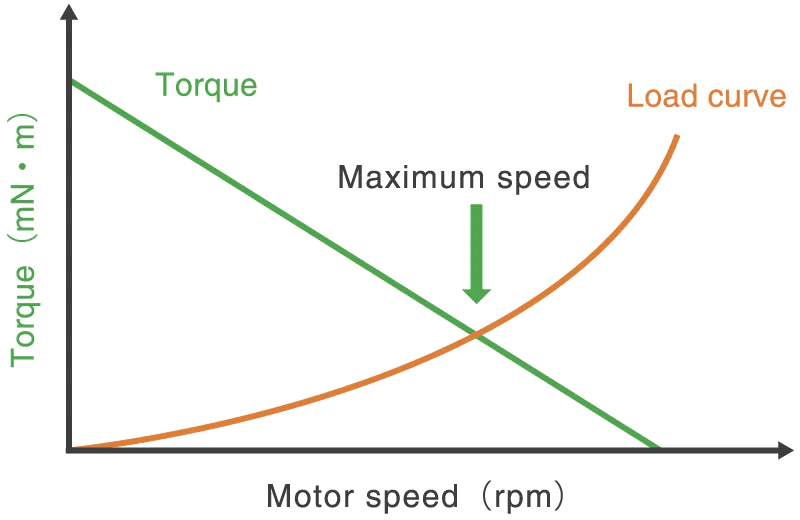
Due to the increase in CO2 emission control listed in the SDGs, the shift from engines to motors is progressing. And the unit is also changing from horsepower to kW accordingly. This time, we will focus on the engine and motor.
How Do You Describe the Engine Output of a Car?
The world has changed its means of transportation from carriages to vehicles equipped with internal-combustion engines. And that brought about a motorized society centered on automobiles. The unit of output has also changed to match it.
And now, we are shifting from petroleum-fueled internal-combustion engines to electric vehicles (EVs) that use motors. So how do you represent the output? Let's start with the engine of a car.
The output of an engine is generally expressed using the power, but historically, "horsepower" has been used. This is because when James Watt invented the steam engine, it was based on the work that one standard cargo-handling horse could do continuously. It was an easy-to-understand analogy of how much work could be done. There are two types of horsepower: British horsepower (HP) based on the imperial system and French horsepower (PS) based on the metric system. In Japan, the latter metric horsepower is used and defined as follows.
1PS = 735.5W
However, this is a unit and conversion formula that is specifically permitted to be used in the Measurement Law under the jurisdiction of the Ministry of Economy, Trade, and Industry and should be expressed in watts (W), which is the unit of power.
By the way, the mechanical horsepower is the following value.
1HP = 745.7W
Another important concept for engine output is "torque". Torque is a concept related to rotational motion and is expressed as the product of force and distance. If you write this in units, it is "N·m (Newton meter)". However, it's hard to understand what it is.
Simply put, torque is equivalent to the force you step on when riding a bicycle. Therefore, you can think that it is related to acceleration performance. In the current automobile, it may be written in kgf·m, but it will be unified to N·m in the future. The conversion between kgf-m and N-m is in the form of multiplying the gravitational acceleration and can be done by the following equation.
10kgf·m = 98.06N·m
By the way, when comparing a gasoline engine and a diesel engine, the diesel engine has a larger torque at low rpm. In other words, the acceleration performance from the stopped state is superior to the diesel engine than the gasoline engine.

On the other hand, the output mentioned above is also related to torque. It can be expressed by the following relational expression.
Output = Torque × rpm
Therefore, the gasoline engine can achieve a higher engine speed, and the maximum output is higher. Also, the maximum speed is proportional to the maximum output, so gasoline-powered vehicles can run faster than diesel-powered vehicles (depending on the vehicle type).
Motor Output of Electric Vehicles and Hybrid Vehicles
Well, what about the motors of electric vehicles, which will become mainstream in the future, and hybrid vehicles, which have become widespread as a preliminary step? The unit is "kW", which is 1000 times the W introduced earlier. When applied to the conversion formula, it is about 1.360 metric horsepower.
As we mentioned earlier, this output is determined by torque x rpm. So, what is the torque of the motor? The diagram below illustrates this.
In the case of a motor, the maximum torque is near 0 rpm. In other words, the maximum torque is produced at the beginning of the rotation.
However, as motor speed increases, the back EMF (Back Electromotive Force) increases proportionally. This is the load required for the motor to maintain rotation, and the torque itself decreases as the rotation speed increases.
Therefore, the maximum motor speed is the point where the generated torque and load (back EMF) are balanced. Beyond that, the load becomes too heavy, and it is not practical.
And the point of maximum output is somewhere between the point where the motor speed is from 0 to the maximum.

As of May 2022, Rimac Nevera has a maximum output of 1408kW for EVs. Nissan Leaf - the typical EV - is 160kW, so there is a difference of 8.8 times. By the way, 1408kW is as follows when expressed in French horsepower.
1408 × 1000 ÷ 735.5 = 1914PS
The output is nearly seven times higher than the previous 280-horsepower limit. Converting this 280 horsepower to kW is 205.9 kW. Most of the EVs of domestic manufacturers are 100-160kW, which may be because consumers have become accustomed to this regulation.
Difference between Engine and Motor Characteristics
As we have seen, the characteristics of the engine and the motor are different. Let's see this difference in terms of driving a car.
Then, let's first consider the acceleration performance from the stopped state. It is important at what timing the maximum torque can be produced. The motor is designed so that the maximum torque comes out at low rotation immediately after starting rotation. Therefore, EVs can be considered to outperform gasoline-powered vehicles in terms of acceleration performance.
On the other hand, the maximum output depends on the performance of the motor. The motor had the characteristic that the load increased as the motor speed increased. Therefore, it can be said that how to reduce this load is the biggest point to increase the motor speed, that is, to increase the output.
Battery Charging Performance is also kW
However, when considering EV performance, it is not enough to know only the differences in motor characteristics. When starting an operation, there are various indicators to compare. How long does it take to charge once, what about the battery unit, and what is the battery capacity?
How do you measure the charging performance? It is the same as the output of the motor, and the unit of charging performance, which is the power of the charger, is also kW. As you can see by disassembling the unit, the unit of the battery is the time to multiply the output, so it is "kWh (kilowatt-hour)". The larger this number, the longer (h) the same output (kW) can be output. In other words, it means that the output (kW) that can be supplied within a certain period of time (h) is large.
Since it is the ability of the charger to charge this battery for how long, the performance is as follows.
kWh ÷ h = kW
In other words, the unit of power of the charger is kW, which is exactly the same as the output.
Of course, a charging device that can charge a high capacity in a short time is excellent, so the output of the charger is a very important index from the mobile battery around you to the EV.
In addition, the battery itself also needs to be excellent. Especially, the one with a high power density per unit mass or unit volume is excellent. The former is called "weight energy density," and the latter is called "volume energy density".
For example, for a lithium-ion battery size 18650, the weight energy density is 201Wh / kg, and the volume energy density is 520Wh / L. On the other hand, alkaline batteries have AA battery sizes of 36Wh / kg and 109Wh / L, respectively, and square lead-acid batteries have 40Wh / kg and 82Wh / L, respectively.
Electricity is the Standard Instead of Fuel Consumption
Finally, it's about running costs or fuel consumption. Until now, in the case of gasoline-powered vehicles, fuel consumption was expressed in km / L (or mile/gallon), which is how many liters can be used to drive how far. If you multiply this by the capacity of the tank, you can find the maximum mileage. Of course, there are also measurement conditions, so the conditions must be met. Since the preconditions for measurement are different between Japan and the United States, the fuel consumption in Japan was a value that was impossible in the United States.
By the way, in the case of EVs, you can understand how far you can run with the capacity of the battery by comparing a gasoline car. Therefore, km / kWh is the fuel consumption. It is more accurate to call it "electricity consumption".
As of 2022, the best EV (BMW model i3) is 8.5km / kWh. On the other hand, the EV with the worst electricity cost is 3.9km / kWh, so there is more than double the difference. In the future, it is thought that each company will focus on how to improve this "electricity cost".
Related Technical Articles
Matsusada Precision offers a wide variety of power supplies used for the necessary testing of electric vehicles.
Reference (Japanese site)
- Japanese source page 「馬力からkWへ、エンジンからモーターへの単位変換」
(https://www.matsusada.co.jp/column/horsepower_to_kw.html) - [Q]最高出力と最大トルクはなにが違うのですか?
(https://jaf.or.jp/common/kuruma-qa/category-construction/subcategory-engine/faq058) - 280馬力規制ついに撤廃..."行政指導"の裏事情を探る | レスポンス(Response.jp)
(https://response.jp/article/2004/08/06/62774.html) - DCモーターの性能線図を理解して高効率駆動について考えてみよう(ITmedia)
(https://edn.itmedia.co.jp/edn/articles/1605/25/news042.html) - 【図解】5分でわかる!電気自動車(EV)の仕組み│どうやって動く?エンジン車との違いは?
(https://evdays.tepco.co.jp/entry/2021/04/13/000006) - 東海大学木村研究室「電気モーターの利点」
(https://kimura.ez.u-tokai.ac.jp/kimura-lab/ev/motor.html) - リチウムイオン電池の基本
https://pub.nikkan.co.jp/uploads/book/pdf_file4fa08a3c3ccbf.pdf - 【2022年】電気自動車の電費(燃費)一覧・ランキング【EV】
(https://riomeo.com/ev-consumption-ranking/) - 電気自動車、日産リーフ。走行性能
(https://history.nissan.co.jp/LEAF/ZE1/1901/performance.html)






